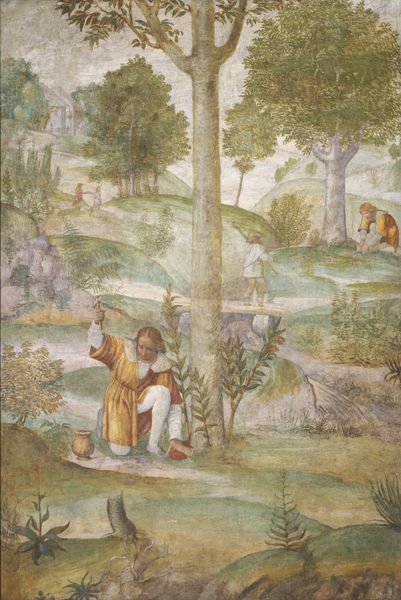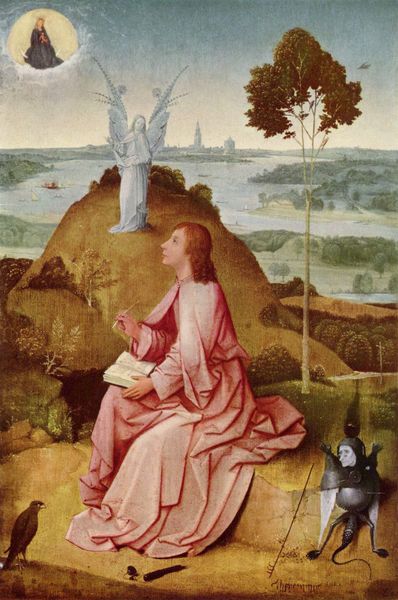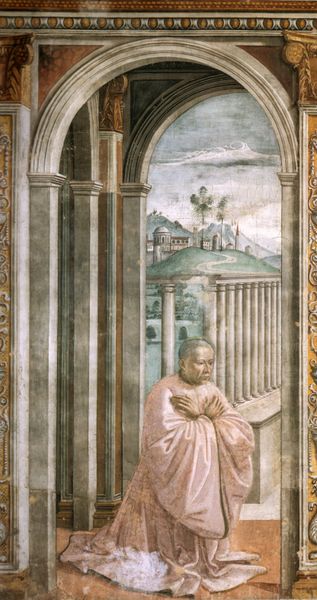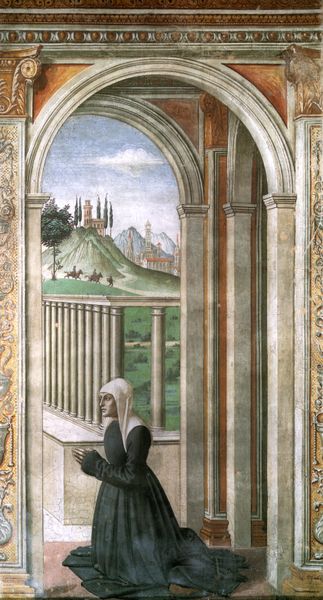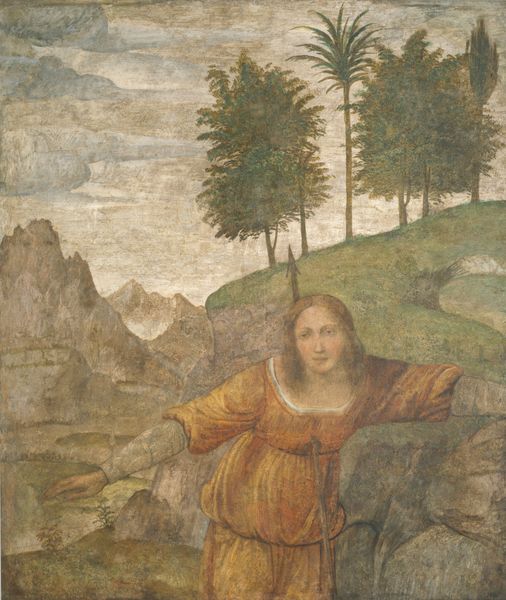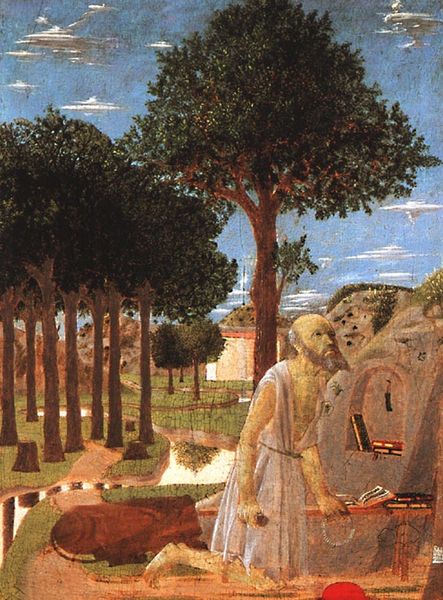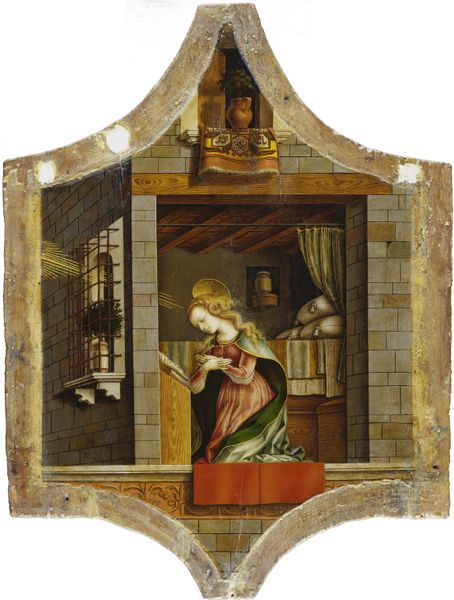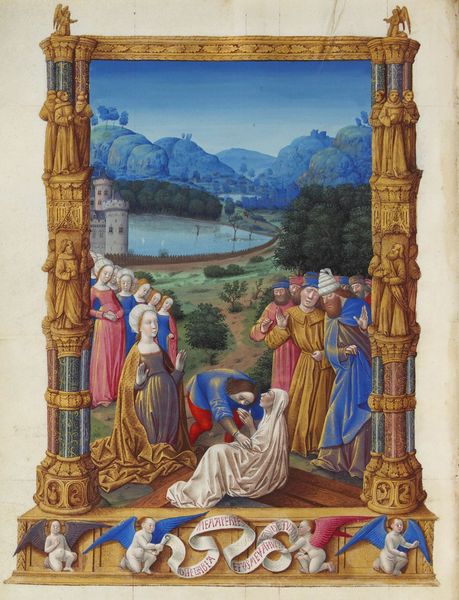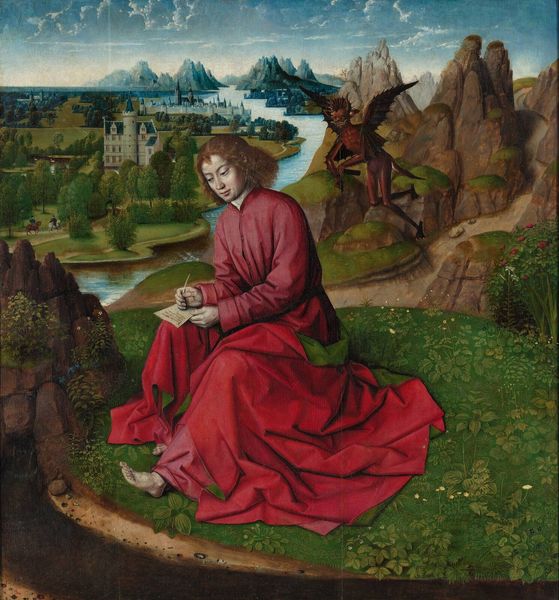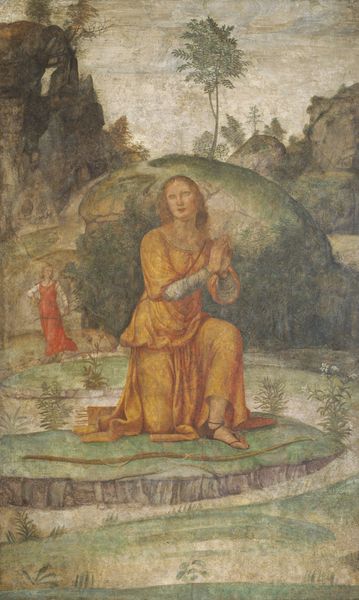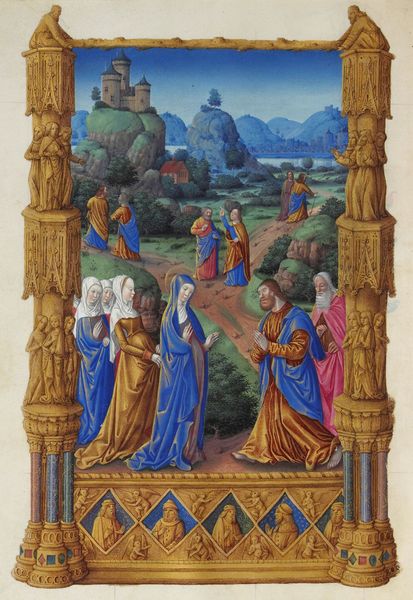
St. John the Baptist in the Desert 1490
0:00
0:00
domenicoghirlandaio
Santa Maria Novella, Florence, Italy
painting, oil-paint, fresco
#
portrait
#
painting
#
oil-paint
#
landscape
#
figuration
#
fresco
#
oil painting
#
christianity
#
genre-painting
#
history-painting
#
italian-renaissance
Copyright: Public domain
Curator: Looking at this fresco, St. John the Baptist in the Desert by Domenico Ghirlandaio, completed around 1490 in Florence, I'm immediately struck by the juxtaposition of John's earthly, almost jaunty stance with the gravity typically associated with religious iconography. Editor: Yes, it feels surprisingly buoyant for a scene traditionally representing isolation and spiritual preparation. The lightness in his step, the almost windswept quality of his robes – there’s an optimism that challenges conventional interpretations of John the Baptist as solely a figure of austerity and repentance. Curator: Precisely. His classical garb and the idealized landscape speak to the Renaissance’s humanist revival, grounding sacred narratives in the visual language of the classical world. Consider the specificity of the trees. They aren't just any trees; they're symbols. That one to the left recalls classical images of victory over adversity, growing where little else survives. Editor: It's also crucial to acknowledge who these idealized forms serve, though. This image normalizes a specific, elite standard of beauty while appropriating Christian narratives for cultural validation. How might the presentation of John – light-skinned, youthful, idealized – function within a broader societal power structure? The backdrop hints at a thriving port city too. A civilization John intends to turn away from. Curator: A city brought to life, I would suggest, through the use of new painting techniques. Think about the innovations in the rendering of light and shadow and atmospheric perspective; Ghirlandaio is capturing a panoramic vista almost as though seen by human eye, thus creating an almost divine effect. Editor: The perspective of whose eye? Whose history gets to be seen so clearly? Even that detail of the sailing vessels carries an unspoken narrative about commerce and exploitation, framing even seemingly ‘neutral’ depictions of nature as historically contingent. What does John's turn from the town signify? Curator: Well, beyond the artistic choices and historic context, one can see an archetypical scene playing out: purification, separation, individuation, setting aside all inessential things... Editor: ...A privileged withdrawal from the systems of power that sustain that very act of individuation. Understanding these systems is critical if the art is to have meaning today. Curator: Ultimately, by uniting old symbols and this fresh, pictorial style, Ghirlandaio does invite all types of conversation about the relationships between ourselves and society. Editor: That’s a goal worth pursuing. These tensions between symbolic form and complex contexts illuminate the ways art both reflects and shapes societal power structures.
Comments
No comments
Be the first to comment and join the conversation on the ultimate creative platform.
